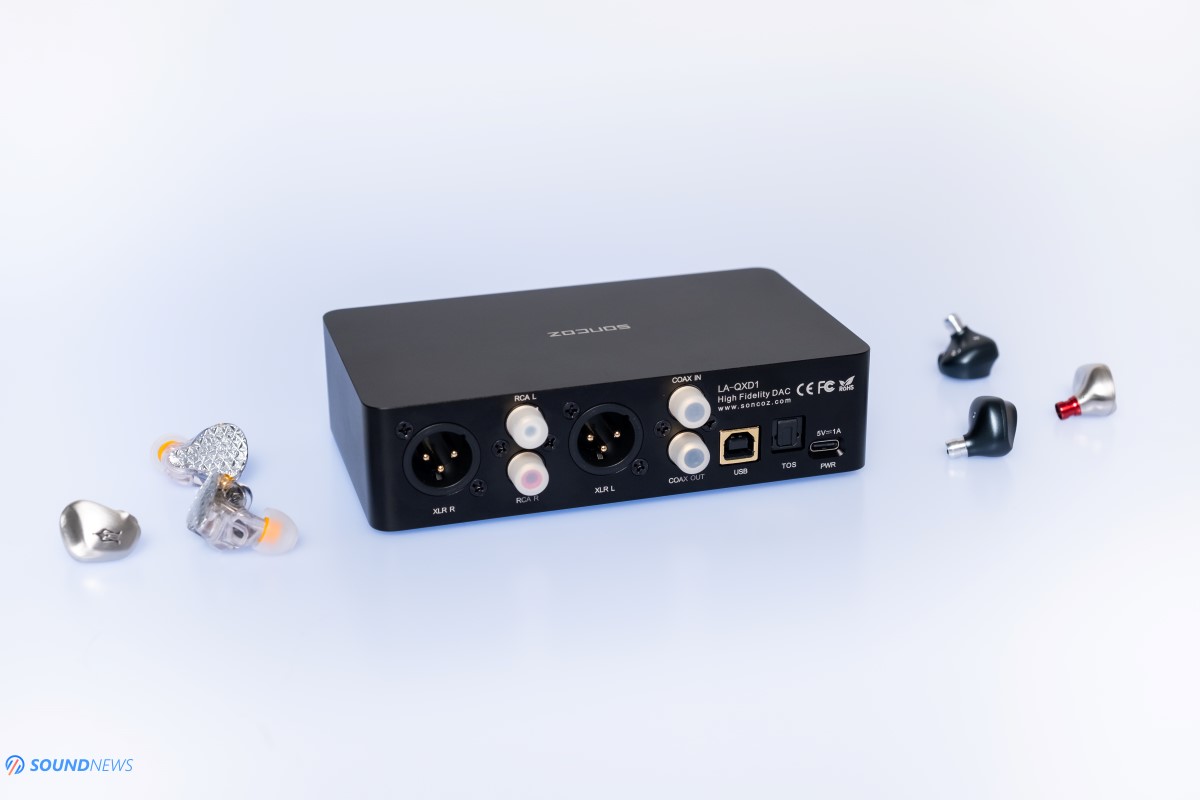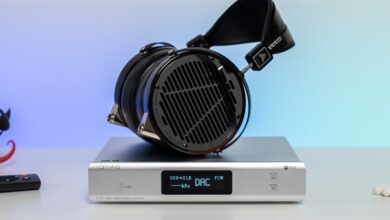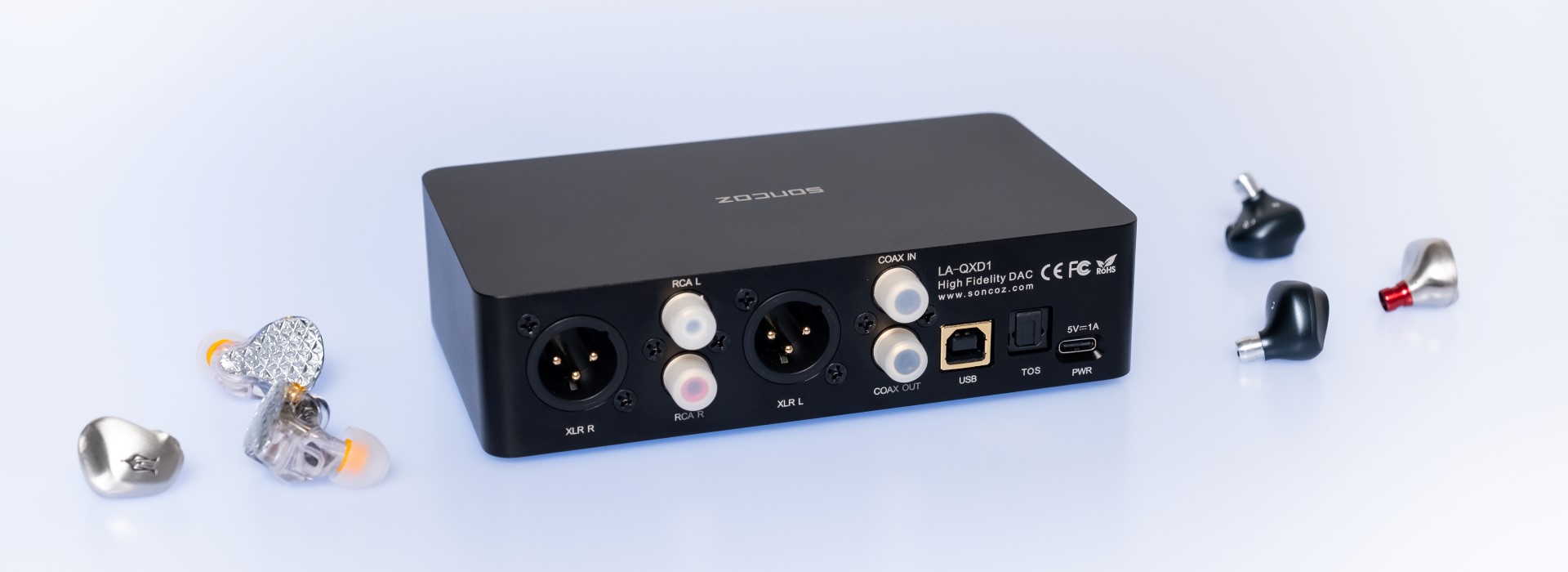
My Video Review:
When it comes to digital audio, the last two years were turbulent, restless but also exciting and rewarding. Few years ago, high-end digital audio meant shelving big amounts of cash, eating less pudding and more bread and water. Yet for the last two years or so, I’ve experienced high-end digital audio even at less than $1000 per component that was unheard of few years prior. Be it binary weighted (R2R) or oversampling DACs with delta-sigma modulators, everyone could choose something to their liking. It was never been a better time to check what is the fuss about Hi-Fi and digital audio.
Living in Europe for my whole life, I’ve tried local Hi-Fi, I’ve supported local economy for a long period of time, until I cared less about the origins of those manufacturers and more about sound quality. The best oversampling and R2R DACs I’ve listened to, are still coming from China and I’ve starting having a much bigger respect from components coming from Asia.
I personally experienced the inception of few companies coming from China and surprisingly all of them are doing well and are expanding their portfolio at a healthy rate. Soncoz Audio is that kind of company and the unit that I will be testing today is their first product – a cute and small balanced DAC /preamp and digital transport that is putting little to no pressure on your pocket as it costs only $199. Ladies and Gentleman meet the LA-QXD1.
Soncoz is a fresh new team and you can learn more about them on their website right here. I can totally understand the name, as they explained the meaning of the word, but I don’t really get it when companies are using such complicated naming schemes as they did for their first product. LA-QXD1 is a model number that killed few brain-cells of mine just trying to remember it, but to save yours I will be simply calling it: the little one, or the little fella.
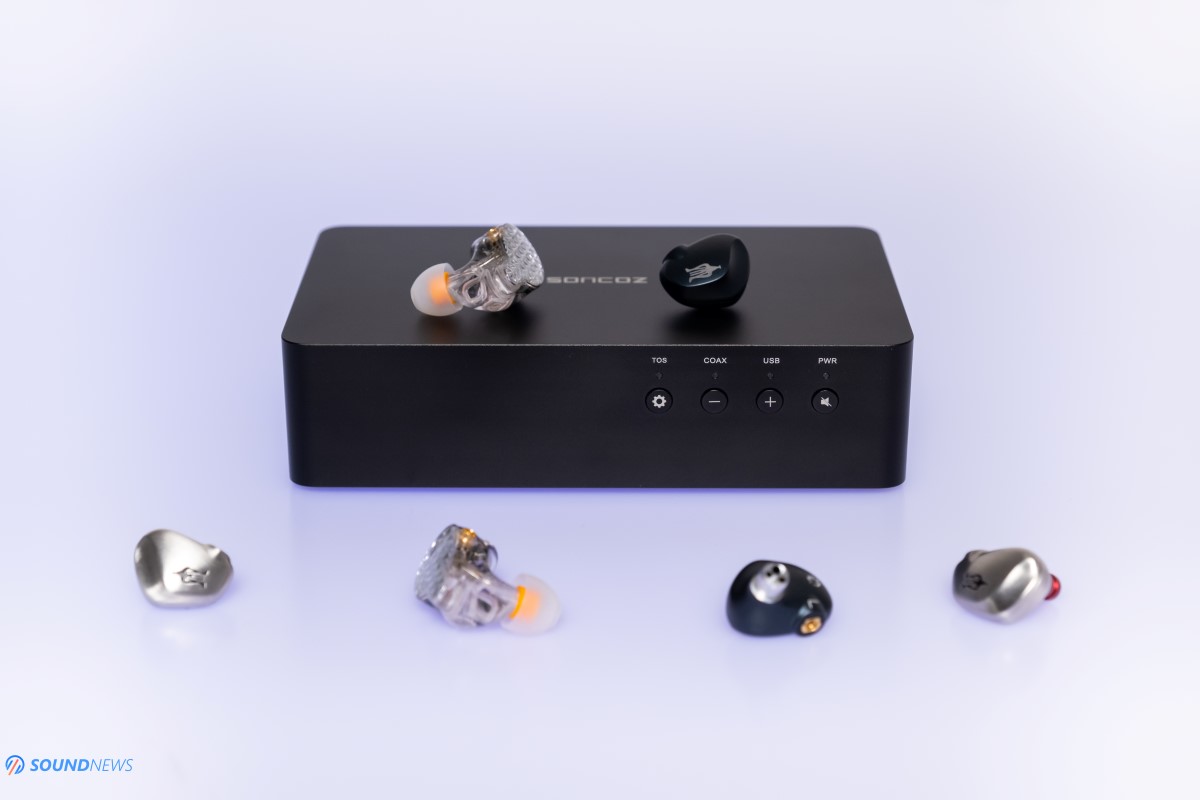
Unboxing & Package Contents
Oh, this was unexpected, especially after unpacking tens of digital to analog converts it is hard to be surprised by packaging anymore. Besides a card-board packaging on the outside, the little one came in a nifty and elegant smartphone-like box. It was white, small and straight to the point. It felt like unboxing a new smartphone than anything else. Inside it, the little one was surrounded by lots of black foam for protection, underneath it I spotted two USB cables: a Type-B cable that will be passing the digital signal and a Type-C cable that will carry power to the unit. Nothing more and nothing else. No paper user-manuals, no wasted materials, no extra-large packaging, every inch was used to the maximum and Mother Earth is thankful for that. The little one was easy to use and I didn’t need a manual to use it right away, but if you just started this hobby and don’t know how to power it and make it play, you can download its user manual from here.
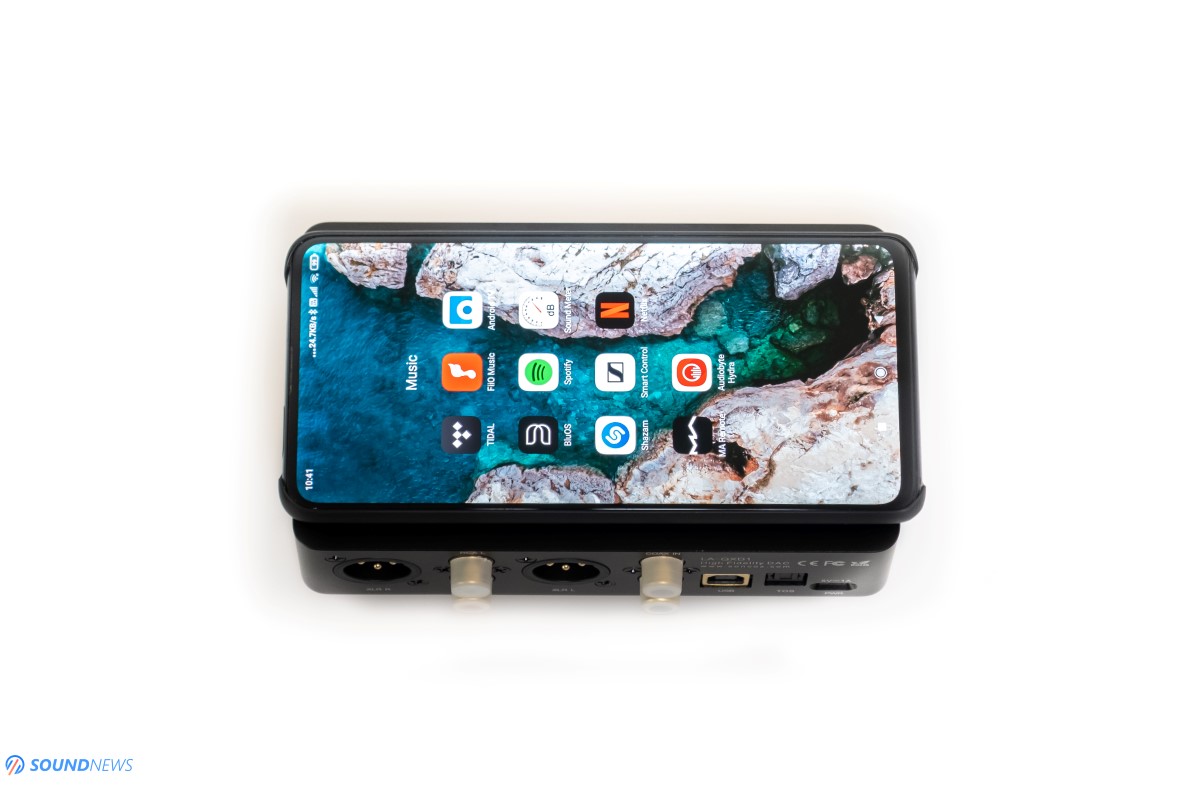
Design & Build Quality
There are several things that I enjoy seeing in this unit. First of all, it is a fully CNC machined aluminum device from a single block of aluminum. There isn’t a visible screw on all sides, except the rear-panel. Seriously now, it looks incredibly simple, elegant and handsome. I really dig this kind of design, without flashy colors or bright LEDs, with the little one, everything is toned down a notch. It uses the best paint you could possibly want: matte back in black, so the WAF factor (Wife Acceptance Factor) is huge in this one. I was not asked what is this thing or what it does, as it looks almost invisible in the living room near a Hi-Fi setup. The surface area of this unit, is exactly the size of a modern smartphone, it has more of less the same area with my Xiaomi Mi9T Pro, meaning that the little one can be infiltrated stealthily even at you work desk, in the office and really anywhere you would want it to be. The LEDs on the front are really small in size and are dimmed so they would not eschew your feng-shui or late-night listening habits. I simply dig its looks, and there is nothing more to say about it.
Since, it looks like a simple aluminum brick, carved from an actual block of aluminum, it is a sealed enclosure that might be sound like a bad design decision for a true-balanced DAC – that are normally dissipating more heat compared to single-ended only DACs. Sleep tight and don’t worry as there are ventilation holes under the unit, that are moving away excessive heat. From about a week of testing, I’m pleased to report that it is only barely warm at touch, so nothing to be worried about. There are 4 flat rubber feet that aren’t as deep compared to other desktop DACs, but again the heat dissipation is not huge so I like their simple and plain look.
On the top plate, the brand name is laser engraved and thanks almighty Odin, the model name is engraved with tiny lettering on the back, so its case remains beautiful and elegant looking in my eyes.
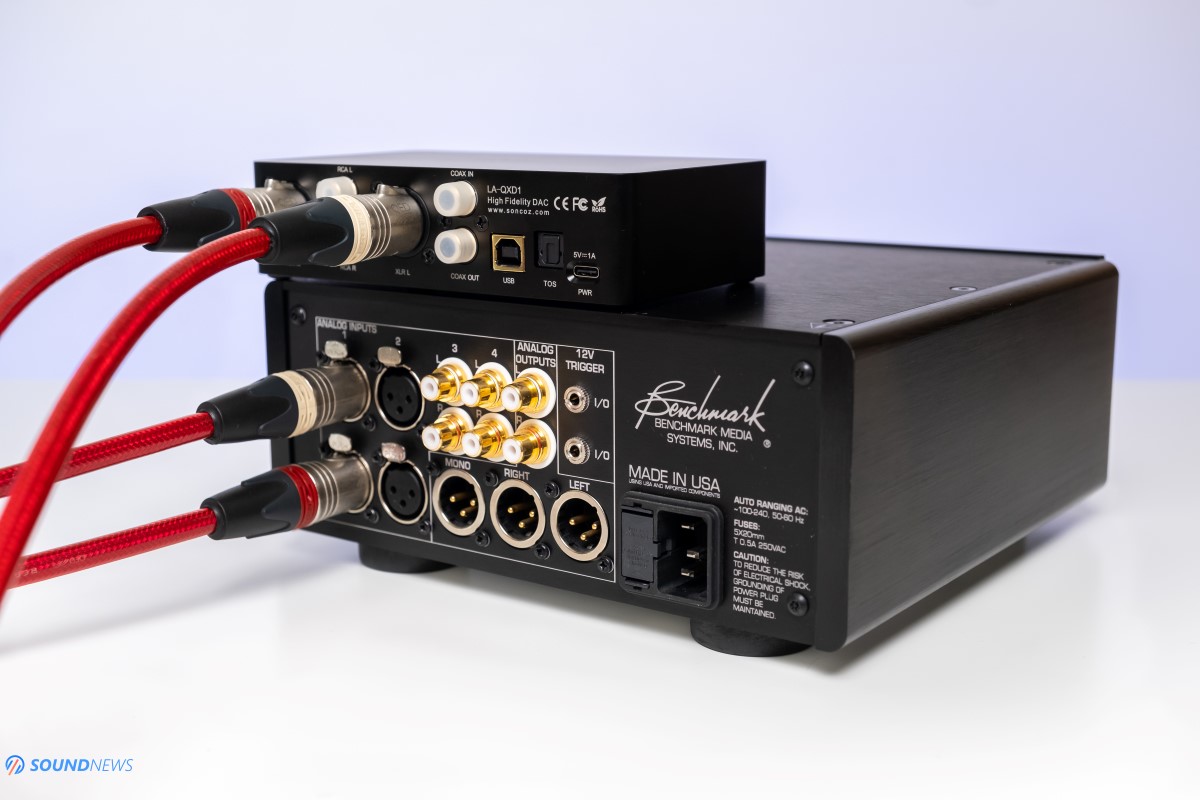
Controls & Connectivity
The are several cool things about the little fella, the coolest thing is that at only $199 we are getting a fully-balanced DAC that is capable of delivering the industry standard 4V on the XLR out and 2V on the RCA out. Besides the single-ended and balanced outputs, you can spot a USB input, a Coaxial and an Optical input. I’m quite surprised by the number of digital inputs crammed on its back-plate. Another cool thing is that you can use the little one as an USB to Coaxial interface and feed that signal to a better performing DAC. On the far right you can spot the USB Type-C that will be powering the unit.
You can also use it as a preamp connected to a power amplifier or maybe directly to your powered speaker and control the volume with the buttons on the front. Sadly, it doesn’t have a remote control in the package and this is precisely why I’m finding it more useful in a desktop setup near a PC or smartphone.
Menu Options
Believe it or not, the little one has actually some settings to play with and I strongly recommend checking its user manual first to learn more. Besides switching the digital inputs, raising or lowering the volume with the front buttons, you can also mute or unmute the signal and change the digital filters that are working on the hardware level with the DAC chip. Do note that all those filters are slightly altering the frequency response only past 20 kHz. If you are having bat or wolf ears, you might actually hear a difference between those filters, otherwise its mostly placebo or too much wine in that day.
It uses Apodizing fast roll-off filter by default and I used it in this position most of the time.

Tech Specs & Detailed Information
Probably the most important thing to know is that the little one uses a quad-channel and a fully balanced DAC chip – the famous 9038Q2M from ESS Technologies. Mind you, it’s the mobile version, not the Pro version that would need additional electronics to function properly. Considering the price point and its fully balanced design, I’m super happy that Soncoz went with this chip, which is more than capable of great sonics in a clean and detailed fashion.
Compared to its competitors like Topping D50S and E30, Soncoz used a more advanced multi-level voltage regulation technique that will ensure clean and pure power on its analog outputs. I will be testing these claims with the most sensitive IEMs at my disposal and will try few power sources as well.
A stable and reliable XMOS XU-208 chipset will take care the USB input, this is the only input that will decode natively DSD and DXD material. Optical and Coaxial will be limited only to Hi-Res PCM as 24 bit and 192 kHz.
I see a nice DC to DC converter inside it, regulated by few resistors – ensuring a constant voltage to the digital board, few audio grade Elna Silmic caps for power filtering and storing. Two voltage regulators will again provide clean power to the critical digital to analog conversion. The analog output stage consists of two OPA1612A op-amps by Texas Instruments – these are dual op-amps so it is clear that we are dealing with a fully balanced signal.
All in all, I strongly believe that Soncoz succeeded where others failed, by offering a true balanced DAC with XLR outputs, with a low impedance output with very low crosstalk numbers to increase depth and soundstage size, at a very attractive price point. This is currently the first digital creature that is doing that at exactly $199. Topping D50S was great sounding, but didn’t have XLR outputs, E30 that followed was also a single-ended DAC. SMSL Sanskrit 10th was more or less the same E30 with different clothes, only their M200 DAC at $279 was a true balanced design. For what it’s worth, I congratulate Soncoz for a true universal single ended and balanced DAC at a really nice price point.
So, what are waiting for? Let’s check how it sounds.
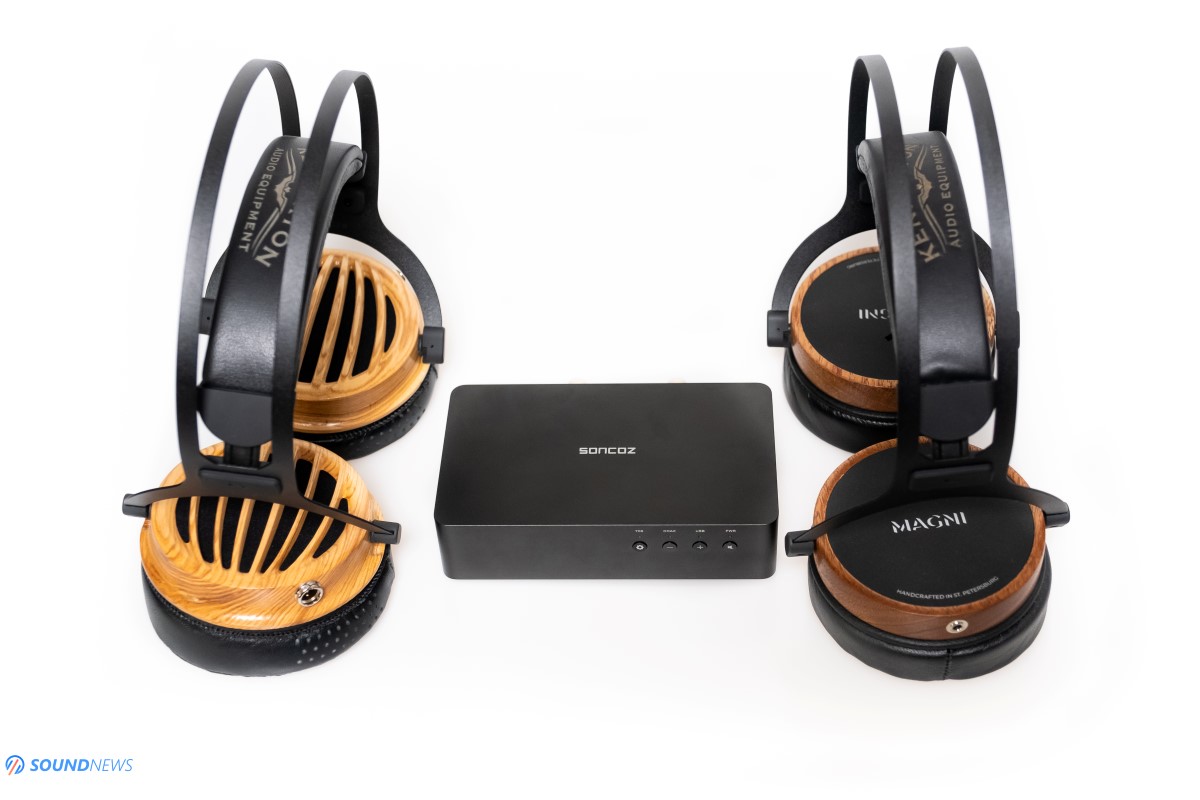
Sound Performance
I. Powering it with different sources & Background Noise
Soncoz is supplying only a USB type-C cable that will be used to power this unit, so you will need to use your own power brick or battery pack to power it on.
You have multiple options to power it: you can use an USB port of your PC or Mac, you can use a power brick from your smartphone or tablet, you can even use an external power bank that should provide clean power delivery and finally you can go nuts and purchase separately a linear and regulated power supply for it with a linear and constant 5V and 1A output, but that one could be more expensive than the DAC itself.
In my Topping D50S and E30 reviews, I have observed quite a difference between powering them with separate power sources as frontal or back USB ports of my PC, to using an external smartphone charger and lastly those two performed the best with an external power bank that provided 1A of current. It was okay to experience that in an $129 device as E30, but I was not that happy to encounter those issue with the $250 Topping D50S.
I went through the same process and I’ve tried every possible scenario, I already prepared a Belgian ale near me, just in case those USB ports would sound really bad and dirty to me.
To my surprise, the little one sounded absolutely identical with the most sensitive IEMs that I have at my disposal. FiiO FA9 in their high-sensitivity mode (16 Ohms and 113 dB per 1mW) sounded absolutely identical with all those power sources. I didn’t spot disturbing hissing or humming, nasty gremlins in my music were nowhere to be found and I’ve experienced a really black background and noise free presentation that I was not prepared for. I went and connected the Meze Rai Penta, then FH7 hybrids followed and the same story repeated itself. I know that you can never go overboard with power filtering, it is still one of the most important aspects in a DAC and Soncoz passed this test with flying colors.
There was a small change in sound, but a very minor one, especially when I was using power hungry headphones as Audeze LCD-4 and Hifiman Arya. With the frontal USB port, the sound would be leaner, less emotional and less punchy in a way. Moving on to external power sources and to power banks, all the positive energy came back and I was again toe-tapping in no time. The only explanation I can give, is that my PC is not supplying a constant 1A of current, more like 500mA and that is precisely why it sounds less engaging and lively to me. Soncoz clearly states that 1A of current will yield the best results, not in terms of noise but more likely in terms of dynamics and transient response. I continued listening to this one with a power brick from my smartphone, so I could have the lowest possible noise and a highly engaging sound too.
Overall, in terms of background noise, connected to the most detailed sounding headphone amplifier and then to some sensitive IEMs, I am putting this one very high. I was truly surprised by the outcome, because in terms of background noise, it sounds as clean as mid to top-tier DACs I’ve tried up to this point.
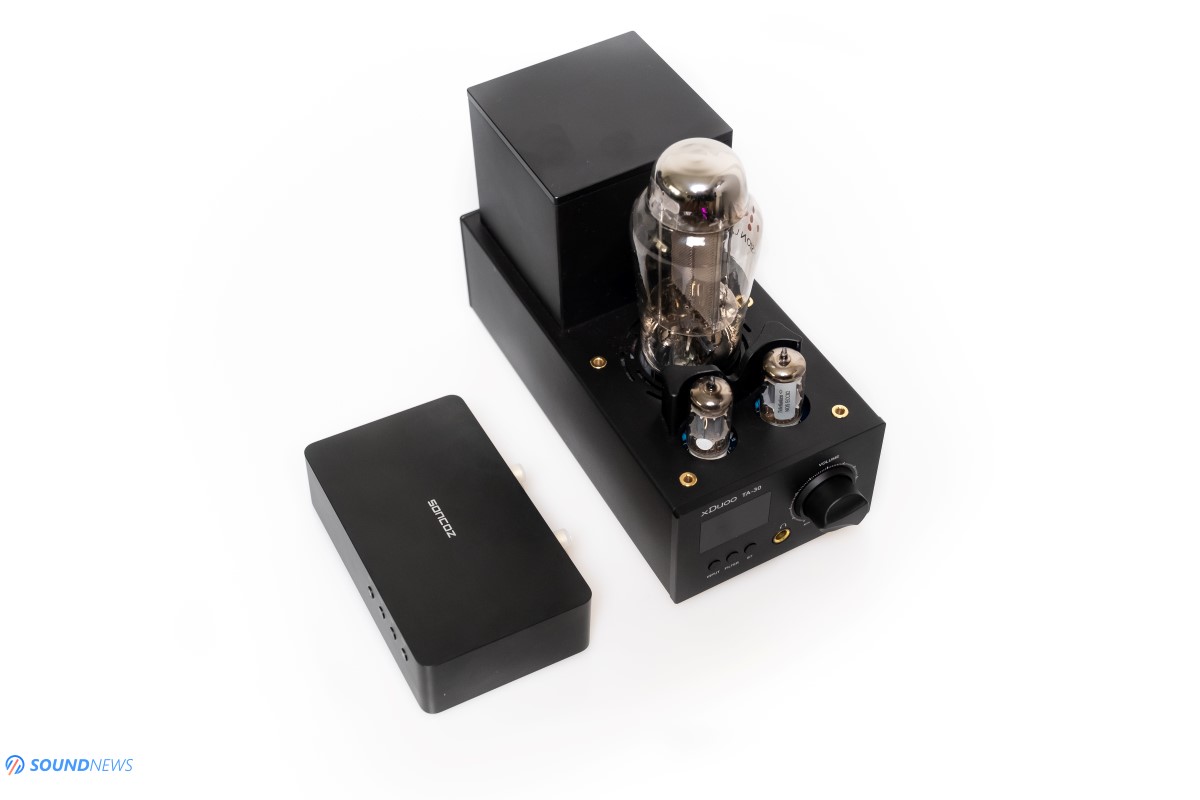
II. Preliminary Impressions & Tonality
I started my morning routine and since coffee didn’t do a lot to wake me up, The Trooper by Iron Maiden (Tidal / Spotify) did exactly that. Even without any burn-in at all, the little fella was kicking those double pedals with an increased pace and timing. Guitars felt raw and visceral, Bruce’s voice was guttural and had a right amount of weight to it. In no time, I was toe tapping as I felt energized for the rest of the day. Two days passed and it sounds completely unchanged, visceral, engaging and clean sounding most of the time.
I remember my past experiences with Topping E30 or D50s as being less engaging and less positive sounding. Let me explain you why that is happening in here. Topping is known to be using one of the most linear and detailed sounding op-amps in their output stage, I’m about the notorious LME49720 op-amps. I have nothing against them, as I have experience great sound out of them, but only when you combine them with a warmer (read: midrange oriented) DAC chips or/and with warmer sounding transistors. I don’t like these in ESS Sabre designs, because a little bit of midrange presence and naturalness is lost forever. There is still a reason, Topping put those on DIP-8 sockets so you can exchange them with something better that will return back the lost midrange and bass heft.
Soncoz didn’t put those in here and for a good reason, because digital audio is not only about details and transparency, it is also about having a good balance in the frequency response, as no one wants a V-shaped experience at their front end. I might want to color my music with my speakers or headphones, I don’t want to do that at the DAC level, that is still the first component that could seriously bottleneck your acoustic chain.
Rarely I can attribute words as natural sounding to an ESS Sabre design. Seriously now, natural sounding and ESS DAC in the same sentence will never happen or just on very rare occasions. My current ESS Sabre DAC is natural sounding, but that is a rare breed in the ESS kingdom. The little fella of Soncoz is both an extended sounding unit in the frequency response, but also a natural performer when it comes to midrange presence. If you ever read at least another review of mine, you can feel how much importance I give to a correct reproduction of midrange and I really hate it when the speed and impact are negatively affected by a weak output stage. The little one doesn’t have that, there aren’t holes in the FR, and it is not decreasing the speed and subsequently the impact that follows. Slowly but steadily, this one is becoming one of my favorite entry-level DACs…
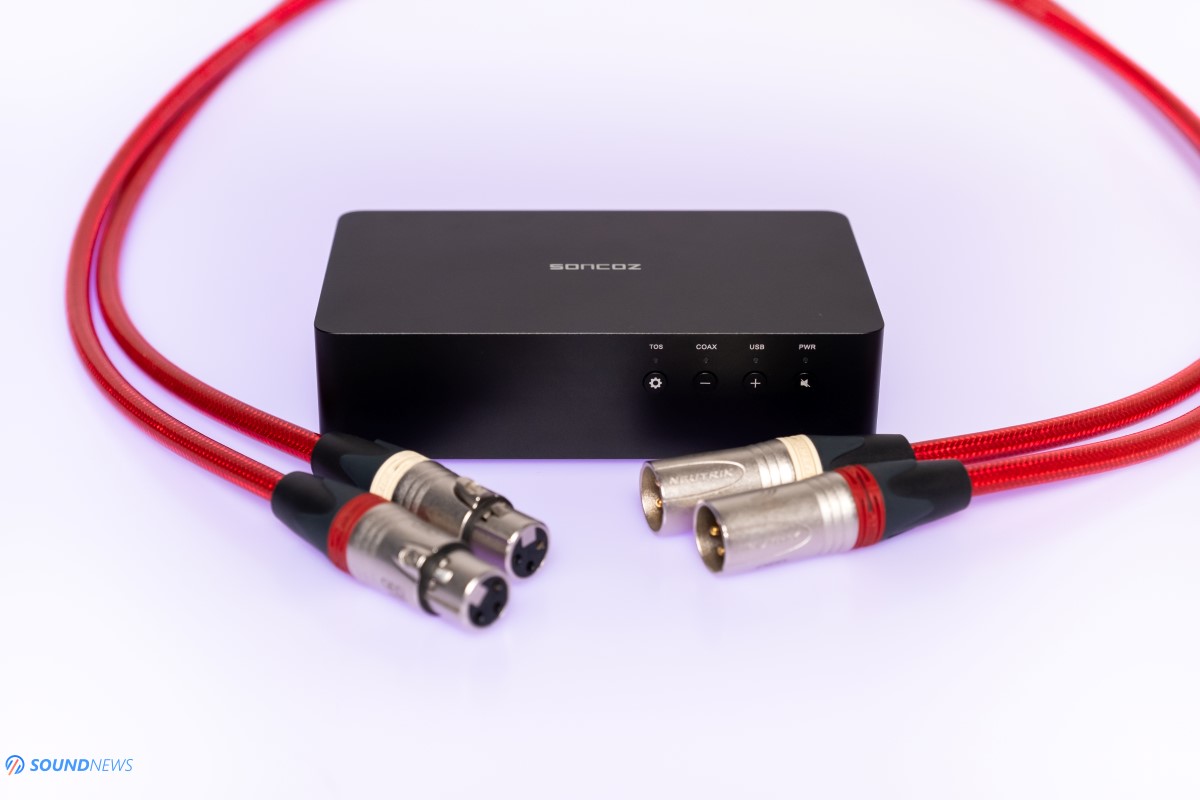
III. Soundstage & Depth
For this chapter I went through some of the best albums of Pink Martini, Helge Lien Trio, Samantha Crain, I’ve listened to few underground jazz quartets that aren’t as popular and the general idea is that the black box is not in your face, up-front or on-stage sounding at all. I did actually experience few depth layers; voices had a decent amount of air around them too. It didn’t sound like a portable DAC or DAP at all, it had this big aura that was pushing the notes a bit deeper into the musical performance.
Generally speaking, ESS Sabre-based DACs and more exactly single ended DACs are sounding closer to the listener, more intimate and that can actually work with raw and really engaging music, but can destroy the stage size when listening to a reference classical piece or to a live recording. I will safely say that due to its lower cross-talk between both channels in the balanced configuration, the little one was not sounding like that. It still had a wider and a bigger sound, there is a longer distance between the most right and the most left sound I can spot in the listening room. Soundstage wise, it still not on the same level with more expensive balanced DACs past $500, but it is coming pretty darn close to them.
Switching back to headphones, Hifiman Arya are less claustrophobic sounding on it compared to both single-ended DACs by Topping, more open than that SMSL Sanskrit 10th and about of the same level with the $279 SMSL M200 DAC that I’ve tested few weeks ago. If I can spot a bigger amount of air with the most AKM-based DACs, with ESS Sabre ones, I can spot a bigger stage only in a true-balanced design and I am having the same feeling with the little one.
Apart from a wider and taller stage, the depth information was also presented in a natural way that created this 3D field mapped inside your head. I was easily focusing on any sound I wanted in a nicer recording and I was glad that the raw and engaging aspect of modern music was not affected at all by the increase of the stage size and depth.
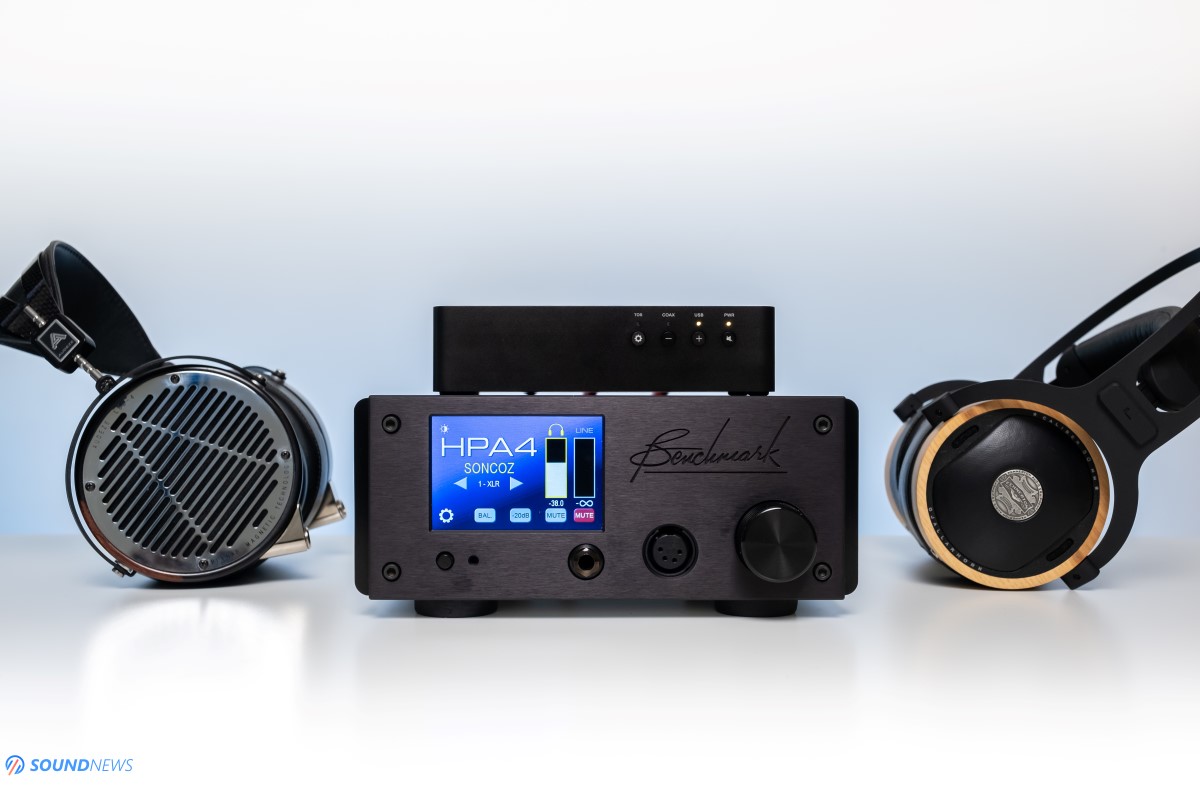
IV. Transparency & Detail Retrieval
This is exactly where most of the ESS-Sabre based DACs are feeling at home with their detailed music reproduction in a very transparent manner. I’m actually on a verge of upgrading to that 1-bit FPGA DAC of Audiobyte, but the slightly better detail retrieval of the Matrix Element X is holding me back a bit. After experiencing tens of DACs in a span of few years, I strongly believe that oversampling DACs with top ESS-Sabre design are still the undefeated champs when it comes to how much information they can extract from your tunes – they are basically the definition of detail retrieval.
The little one obviously is not really up there, but it is not difficult for him to show small errors in the mastering, some tiny sounds that shouldn’t be there, small chats in the auditorium, inhaling and exhaling air of the singers and things like that.
That is correct, the little Soncoz unit is capable of extracting a bigger amount of details and put them on a plate for the listener to pick-up. It is doing that effortlessly; it can even show some grain and stressful areas in the frequency response. It is both detailed and quite natural sounding with very little to nitpick. If you are searching for an affordable true balanced DAC that offers a more than a decent amount of detail, it is currently the most accomplished one I’ve tried, it even obliterated my former Abrahamsen A-DAC II that I was using in a secondary balanced setup some time ago.
Compared to optimist sounding DACs as Topping E30 or SMSL M200 that are mostly showing the goods parts of a recording, hiding away all the negativity behind them, Soncoz unit is not really like that. The little one is more honest sounding, it will show an additional layer of information, it will show more good stuff and more bad stuff in that particular track. I have a bigger respect for honest sounding sources, as I want to hear everything is there to hear, not only the best parts and the little one is much closer to my goal.
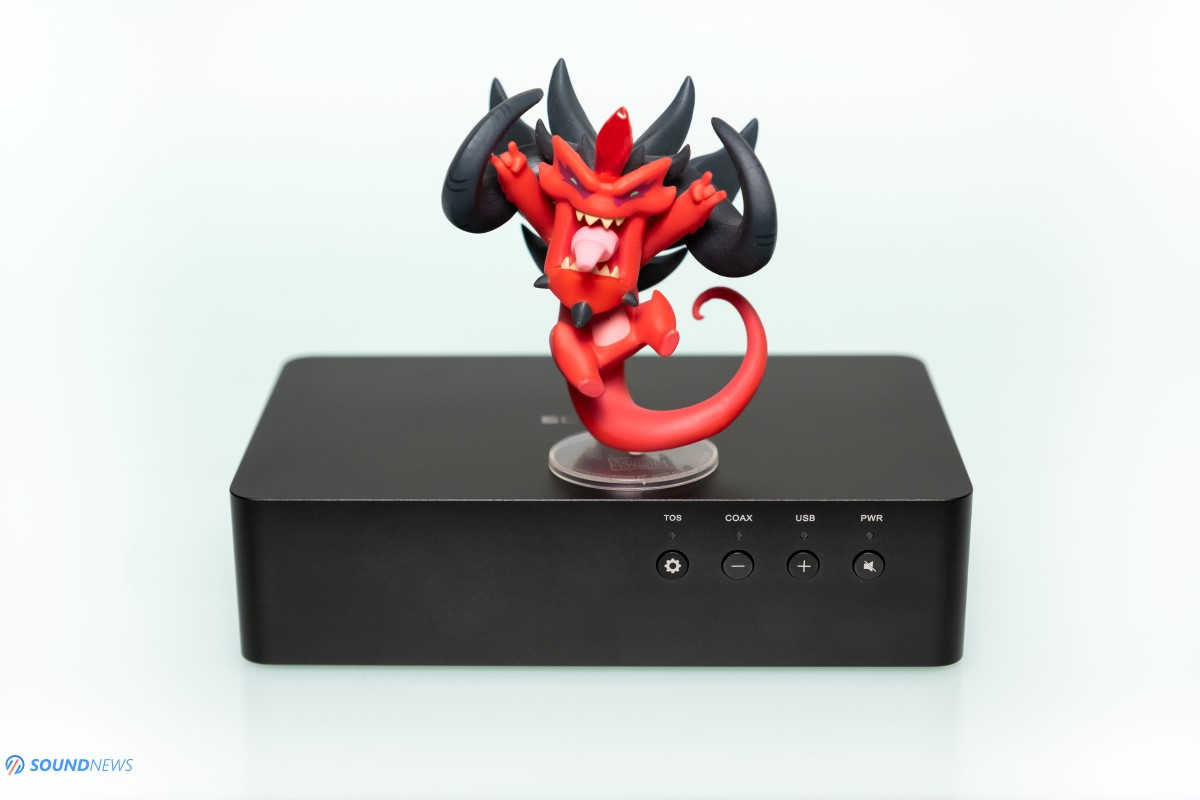
V. Transient Response
I’m pretty sure that Benchmark HPA4 and Flux Labs Acoustics FA-10 are giving a huge helping hand to the little guy, increasing the pace and offering a really nice punch and impact into ear-drums. The same effect was heard on the speaker setup, were both KECES S125 and Kinki Studio EX-M7 can be considered as fast and agile sounding amplifiers. I used it a bit more in the headphone setup, because the lack of a remote control is a real issue when you listen to your music on a couch, far away from the unit and those volume buttons.
The little one is an agile and fast sounding source with more than a decent punch and slam. I was enjoying my time with it when I started listening to all sorts of fast executed music. From electronica to rock and then to metal, it was able to keep its pace with everything, even double drum pedals didn’t pose a problem for it. I was both fast and energetic sounding all the time, I didn’t spot a decrease in intensity in any frequency range. Guitars felt raw and visceral, drums were impactful with fast decays. Dynamics were going up and down in a span of nano-seconds. What more I can add? It is still not a transient monster how bigger and more expensive DACs sounded, but maybe its bigger brother SGD1 will solve that issue.
I did spot ultimate speed, but I didn’t feel the ultimate thump in the chest I normally should hear with these speakers, or ears flapping in the headphone setup. This is normal behavior, as more and bigger caps will be needed to store more energy and a more powerful all-discrete output stage will be needed to unleash a bigger slam into the chest or ears.
Still, the little guy is not a gentleman type of DAC, it is not excessively smooth, tender, relaxed and slow sounding unit with long decays. It more of a light-weight street fighter that wants to impress with its agility, fast punches and decays. It was smooth sounding only with few particular tracks that are invoking a full relaxation of the body, otherwise expect a nice and high-grade transient response.
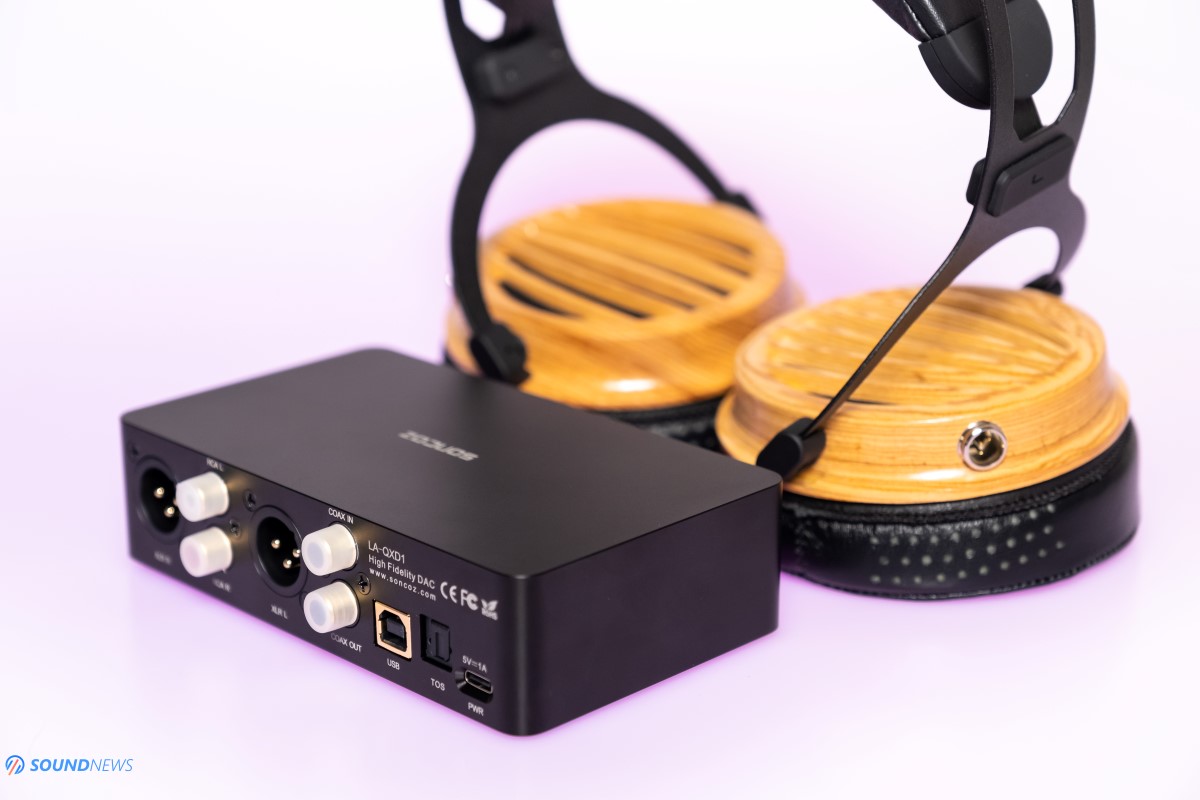
VI. Frequency Response
I find the frequency response extremely linear and it is extended at both ends. One of the traits of entry level ESS-Sabre DACs is that most of them are really good when it comes to frequency response and the little Soncoz feels no different.
I’ve tried logarithmic and linear 20 Hz sweep tones; I’ve tried using the deepest reaching electronica tracks and there is no other way in saying that the little guy is exceptional when it comes to rendering bass notes and everything that is tied to its performance (like punch and heft). The little one is not a bass heavy source, but it is incredibly good in this region. Not going to lie that most of my listening tests were done on electronic and rock tracks. I believe it shined brighter exactly in here compared to say AKM-based DACs that are working better with mellow and smoother music. Sub-bass was going low, sweep tones were heard loud and clean on Audeze LCD-4 and I was really glad when that happened. My usual underground drum&bass was a delight to listen to. Bass was not only going down, but it was executed in a fast manner, it was layered and detailed with not a single sign of muddiness or long decays.
Mid-bass performance was identical to the low-end, it was not overdone, elevated or subdued. I am hearing just the right amount of bass and again is clear sounding, it hits fast and goes away in an instant. I almost want to say it is a meaty type of bass, full of substance, I’m feeling my electronica a bit more saturated, like the air is heavier with this type of music. For modern music, the little Soncoz is exactly what doctor ordered as it is clean, extended and deep reaching.
Most of all of the entry to mid-level DACs that are based on ESS chipsets, were decent but not really impressive when it comes to midrange performance. The biggest culprit of those devices (from the likes of Toping, SMSL and others) was using those LME49720 op-amps that are really hurting the midrange performance. Soncoz is not using those and instead went with a more natural sounding OPA1612A that is adding a bit of naturalness and this is exactly what a soulless and detailed chipset like ESS really needs. It is all in the balance folks and I do think that Soncoz nailed it tonality wise.
It is not as natural and smooth sounding as an R2R DAC for example, but for from the flock of ESS-based DACs, this one stands out as being on the musical side of things. Yes, it is a bit warmer sounding to its competition and I am personally liking that. I’m still listening to a lot of old music and I do think that the soul of those recordings was nicely preserved. The tone in the midrange is not exactly linear, but by a hair elevated to hear deeper vocals, nicer string instruments, deeper roaching piano and many other things. Finally, I can attribute words as natural sounding to an entry-level ESS-based DAC, that is a first in my career.
As for the treble, I do find it extended and that happens even past top-octave. There is lot of zing, a lot of texture in there too. Bells are ringing nicely without clenching my teeth, snare drum crashes felt visceral but pleasing and real. I simply wanted more of that. Soncoz proved that they can design detailed sounding DACs, that are really good in the treble and that are not hurting the listening experience at all. Do note, that I have paired this one with the most detailed and extended sounding headphone amplifier. A bright sounding DAC should be a No-No on the Benchmark HPA4. Thankfully, that didn’t happen as these two became the best buddies in the last 5 days or so. You can easily attach a THX-based amplifier to this one no problem, that nested-feedback Topping A90 should have absolutely the same results. Want more soul in your recordings? Go with a class-A, AB, or with a tube-based amplifier and tailor it to your needs.
There is no other way in saying it, that the little Soncoz is detailed sounding, extended in the FR, with just a hair more midrange presence to make all your amplifier pairings a much lesser pain. I really wanted to complain about it, bash it at least a few times in here, but I can’t find serious faults in this one. It is more than good when it comes to technicalities and naturalness.
I am not going to add comparisons in this review as I don’t have other sources in the same price point, but I will simply add that I liked it more than SMSL M200, SMSL Sanskrit 10th, Topping E30 and surprisingly I liked the tonality of this one considerably more than that of the Topping D50S.
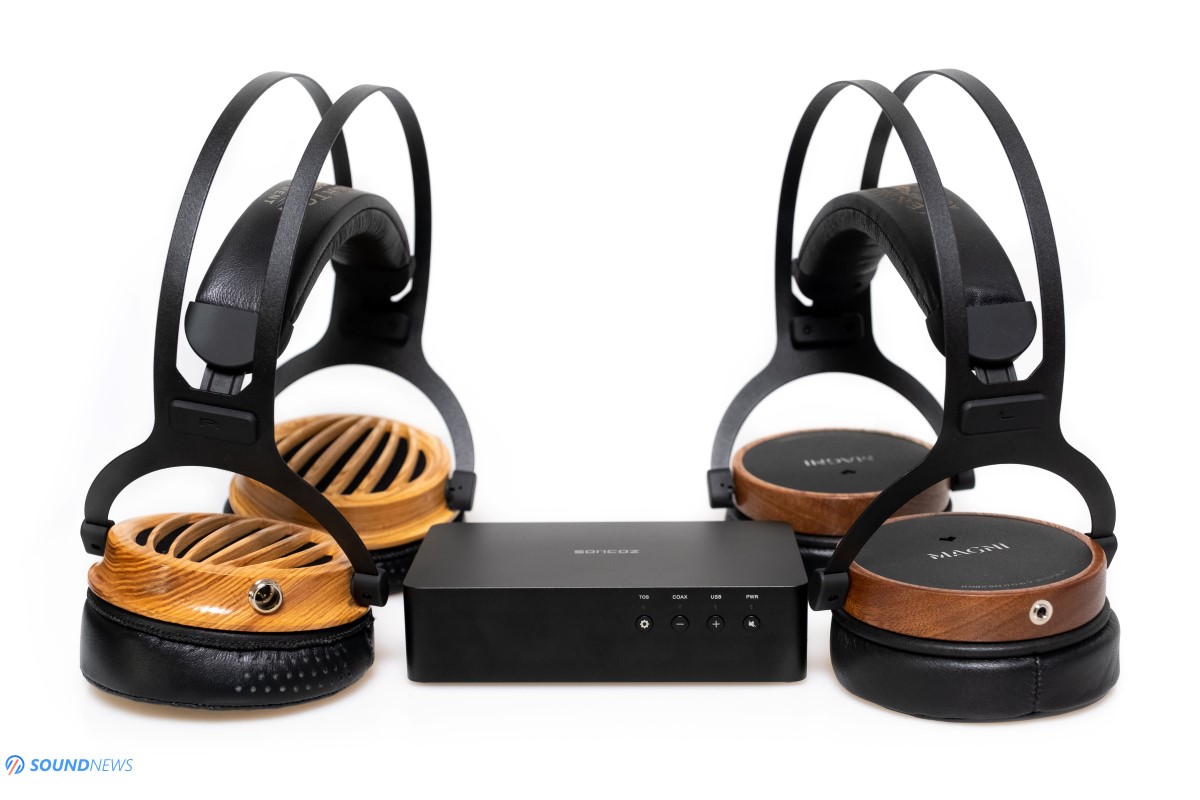
Conclusion
Even from the start Soncoz surprised me with a different packaging, with a simple, yet elegant look. The build quality and attention to detail was simply mind-blowing, usually I am spotting the same approach and quality materials at double its price.
Secondly, the balancing act of making every component work together as a team, the chip selection, the power filtering and the analog output stage were cleverly designed to fight the biggest flaws of ESS-based DACs. Did Soncoz succeed in their task? Mightily so, I was truly impressed with the results and I strongly believe that when it comes to entry-level DACs, there isn’t a better balanced DAC that has the same tonal balance, cleanness, wide open sound and low price point.
I will be actually awarding the little Soncoz with our Bronze Award as being the best sounding entry-level DAC I stumbled upon. This award was not given to any entry-level DAC up to this point and that says a lot about its performance as a whole.

I don’t like using the word best, I rarely use it and try to stay away from it, but this is the only truth about the Soncoz LA-QXD1. I will be recommending it quite a lot to newcomers and to the ones that are building a secondary system.
Soncoz LA-QXD1 was kindly provided by HiFiGo, it can be purchased from their web-store by following this link and don’t forget to download its user manual and firmware updates from Soncoz website.
PROS:
- Looks and feels like a solid aluminum brick
- Extremely small footprint – could be easily integrated into tight spaces
- Amazing attention to detail, great build quality
- Fully balanced design, input to output
- Excellent tonal balance, as its natural and detailed sounding
- Impressive midrange performance coming out of an ESS Sabre DAC
- Detail retrieval and transparency is at a very high level
- On the balanced out it has a wide and tall soundstage size, with a decent depth
- Very good speed and impact, with a decent slam as well
- Great power filtering and noise rejection, works even with sensitive IEMs
- Linear and extended frequency response
- The best value at this price point
CONS:
- Really miss the remote control – difficult to use in a speaker-based setup
- Slam could be better
ASSOCIATED EQUIPMENT:
- Sources: Xiaomi Mi 9T Pro, Corsair One i160
- DACs: Soncoz LA-QXD1, Audiobyte HydraVox + HydraZap, Matrix Audio Element X, Denafrips Venus, Flux Lab Acoustics FCN-10, Burson Conductor 3X Performance
- DAPs: Shanling M6, FiiO M15
- Headphone Amps: Benchmark HPA4, SparkoS Labs Aries, Flux Lab Acoustics FCN-10, LittleDot MKIII SE, xDuoo TA-30
- Integrated Amps: KECES E40
- Power Amps: KECES S125, Kinki Studio EX-M7
- IEMs: FiiO FA9, FH7, Meze Rai Penta, Rai Solo & lots of other lower tiered ones
- Portable headphones: Sennheiser Momentum 2, Meze 99 Classics
- Wireless headphones: Sony WF-1000XM3, Sennheiser Momentum 3, Master&Dynamic MW65
- Full-sized headphones: Audeze LCD-4, Erzetich Phobos, Hifiman Arya, Quad ERA-1, Ollo S4X Reference, Kennerton Magni, Kennerton Gjallarhorn
- Loudspeakers: Buchardt S400
- Interconnects: QED Reference (x2), Aune AL3
- Speaker cables: Kimber PR8, Audioquest Type4
- Power Cables: Isotek EVO3 Premier (x3)
- Balanced Isolation Power Conditioners: PLiXiR Elite BAC400, KECES BP-600
